The Hidden Narrative Behind ZEC's Surge: The Safe Haven Migration of "Chen Zhihe and Qian Zhimin"
Original article by Odaily Planet Daily ( @OdailyChina )
Author|Wenser ( @wenser2010 )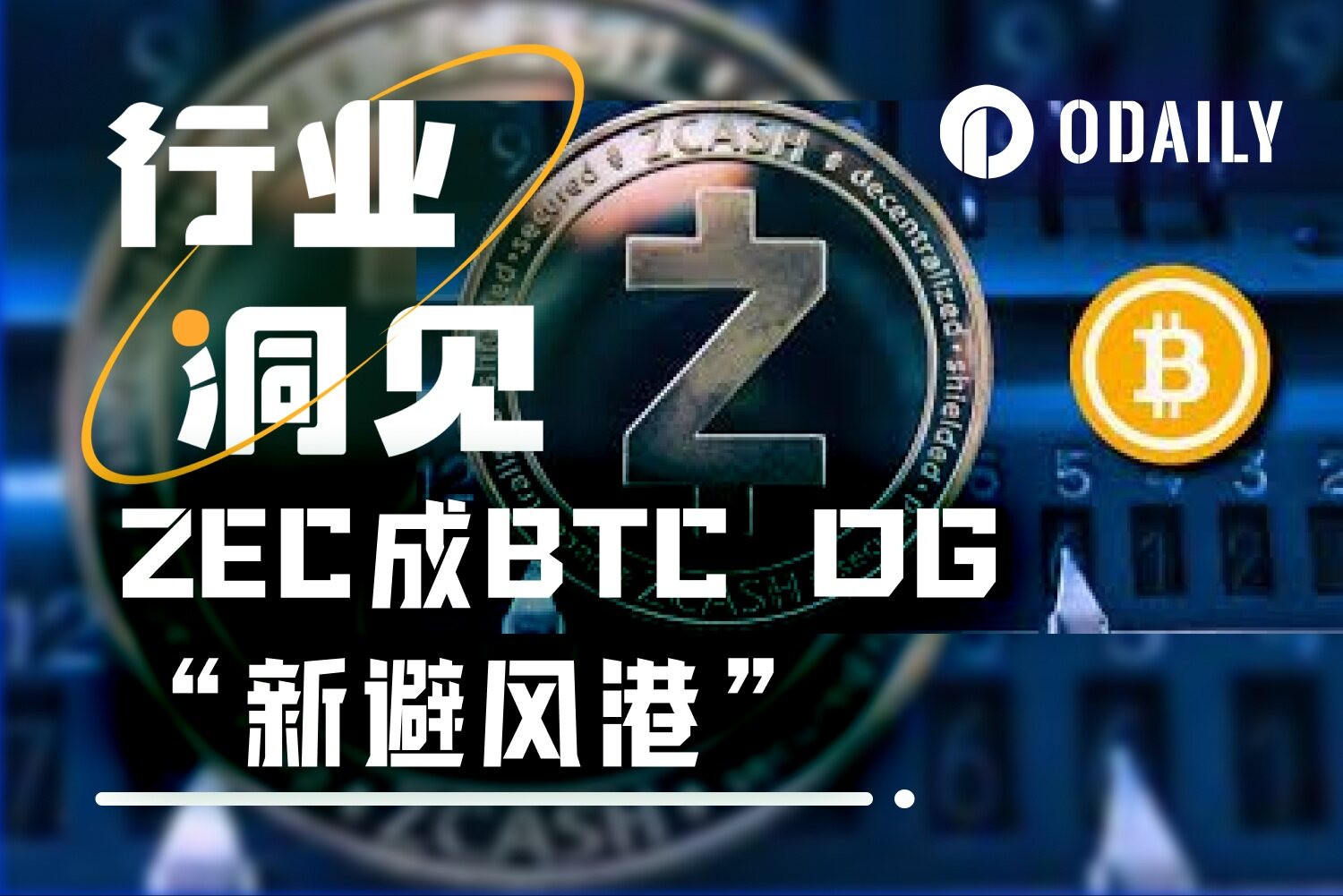
The US government shutdown has finally come to an end amidst much anticipation, but market sentiment has not recovered accordingly.
The crypto market not only failed to see the expected "sell the news" rebound, but instead continued to be dominated by a downward trend: BTC once fell below the $90,000 mark, and ETH once dropped below $2,900. "Across the board, all cryptocurrencies are falling" has almost become the defining characteristic of the current market. Only the privacy sector, represented by ZEC, has bucked the trend and shown a remarkably bright independent performance.
At the same time, two major cases that have shaken the industry are unfolding simultaneously: the 127,000 BTC held by Chen Zhi, the head of the "Prince Group," were confiscated by the US government; and Qian Zhimin, the mastermind behind the "Blue Sky Green" illegal fundraising of over 40 billion yuan, was arrested after seven years on the run, with his assets of over 60,000 BTC also remaining unresolved.
Behind these two incidents lies a domino effect—Bitcoin's censorship resistance and anonymity are being questioned like never before by tech geeks, fundamentalists, and even mysterious gray market whales.
When authoritarian forces in the real world clash head-on with the ideals of decentralized technology, the outcome is far from romantic, prompting idealists to ponder: in terms of the ultimate ownership of BTC assets, the state apparatus is the final winner.
This has forced the crypto industry to confront an old question again: if BTC also struggles to assume the role of "censorship-resistant currency," then who will be the next symbol of privacy and on-chain asset storage? The market's answer may have already emerged— ZEC , which is bucking the trend and trending upwards at this point in time, is becoming the appropriate "version of the answer."
ZEC's sharp rise may not be a manipulation tactic by large investors, but rather a reflection of long-term market demand from whales with substantial capital. This conclusion is supported by multiple narratives and data dimensions.
When authoritarian governments crush the illusion of "censorship-resistant currency": Bitcoin is no longer a noble "safe haven" asset.
One of the direct reasons for the renewed faith in ZEC as a "privacy token" is the hidden information revealed by the two recent "BTC huge asset cases": BTC's censorship resistance and anonymity are being severely tested.
Let's start with the case of Chen Zhi, the head of the "Prince Group," which involves $15 billion in funds.
Previously, Odaily Planet Daily provided a detailed account of the case in its article "$15 Billion BTC Changes Hands: US Department of Justice Cracks Down on Cambodia's Prince Group, Transforming Itself into the World's Largest BTC Whale," which included specific details of the "BTC seizure and confiscation process."
In this case, judicial and intelligence agencies demonstrated a complete process for handling on-chain assets: on-chain location → financial blockade → judicial takeover. This was a practical closed loop that seamlessly integrated "on-chain tracking capabilities" with "traditional judicial power."
Step 1: On-chain Tracking – Locating the “Funds Container”. Bitcoin’s anonymity is often misunderstood. In fact, its blockchain is a public ledger, leaving a trace of every transaction. The Chen Zhi Group attempted to launder money using the classic “spray-funnel” model: dispersing funds from the main wallet to a massive number of intermediate addresses like water being sprayed from a spray bottle, then, after a brief stay, re-aggregating them into at least a few core addresses like streams flowing into a river. This operation seems complex, but from an on-chain analysis perspective, the frequent “dispersion-convergence” behavior actually forms unique graph characteristics. Investigative agencies (such as TRM Labs and Chainalysis) used clustering algorithms to accurately map the “funds return flow,” ultimately confirming that these seemingly dispersed addresses all pointed to the same controlling entity – the Prince Group.
Step Two: Financial Sanctions – Cutting Off the “Cash-out Channel.” After locking up the on-chain assets, the US authorities initiated dual financial sanctions: OFAC sanctions: adding Chen Zhi and related entities to a list, prohibiting any entity under US jurisdiction from transacting with them. Financial Crimes Enforcement Network (FinCEN) §311: designating key entities as “Prior Money Laundering Concerns,” completely cutting off their access to the US dollar clearing system. At this point, although these Bitcoins can still be controlled by private keys on the blockchain, their most important value attribute—the “ability to be converted into US dollars”—has been frozen.
Step Three: Judicial Takeover – Completing the “Transfer of Ownership.” The final confiscation did not rely on brute-force cracking of the private key, but rather law enforcement agencies directly took over the “signature rights” of the assets through legal procedures (such as court orders). This means that law enforcement personnel successfully obtained the mnemonic phrase, private key, or controlled the hardware wallet, thus enabling them to initiate a valid transaction, transferring Bitcoin to a government-controlled address, just like the original owner of the assets. However, in Chen Zhi's case, the official details of how the US government obtained the private key have not been released. Therefore, some in the community speculate that law enforcement agencies used the previously exposed security vulnerability in Lubian.com to crack the private key. The moment the transaction was confirmed by the blockchain network, “legal ownership” and “on-chain control” were unified. The ownership of these 127,271 BTC was officially transferred from Chen Zhi to the US government in both a technical and legal sense. This series of actions clearly demonstrates that, in the face of state power, the “inalienability of on-chain assets” is not absolute.

$15 billion BTC asset transfer process
This incident was further explained in detail in the "Technical Source Analysis Report on the Hacking and Theft of a Huge Amount of Bitcoin from LuBian Mining Pool" released by the National Computer Virus Emergency Response Center . This "most significant virtual asset confiscation operation in history" was actually a "typical 'double-cross' incident orchestrated by a state-owned hacker organization." In the crypto world, which is like a dark forest, there are not only "North Korean national teams" like the Lazarus Group, but also "American teams" acting as "on-chain special forces" quietly lurking in the shadows.
Compared to Chen Zhi, the head of the "Prince Group" who has been steadily expanding his influence in Southeast Asia, Qian Zhimin, the protagonist of the money laundering case involving 60,000 BTC, has a more legendary and tortuous experience.
According to Caixin , she first learned about Bitcoin in 2012, and her ambition was to one day hold 210,000 Bitcoins, representing 1% of the total Bitcoin supply. She nearly achieved this goal: between June 2014 and June 2017, over three years, Qian Zhimin instructed her "front people" to buy 194,951 BTC at an average price of only 2,815 yuan per coin (statistical method unknown). By the time she was sentenced in the UK this November, the price of Bitcoin had inflated 266 times to 750,000 yuan per coin. Qian Zhimin's diary entries from May to July 2018 show that she developed a "six-year plan" for 2018-2023, with the core goals of "retiring at 45" and "rebuilding her digital empire." She required herself to "retain at least three identities," including St. Kitts and Nevis and "two European countries (at least one unknown to others, but allowing free travel in Europe)," while also securing two long-term leased "safe havens" in Europe.
To support these plans, she pegged almost all her major expenditures to Bitcoin. Her diary entries state that in 2018, based on a price of approximately $6,800 per coin, she planned to sell at least 4,000 Bitcoins for immigration, home purchases, and team building; in 2019, assuming the price rose to $8,200, she planned to sell no more than 1,500; and in 2020, she further raised her budget to $9,500, reserving approximately 1,750 for investing in exchanges and cultivating various "personal relationships." In her diary, she bet that the price of Bitcoin would remain between $40,000 and $55,000 per coin for an extended period after 2021, using this as a basis for planning grand projects such as a "digital bank," a "family fund," and building her own kingdom.

Explanation of the key points in the Qian Zhimin case
From the second half of 2016 to 2017, Qian Zhimin deposited over 70,000 Bitcoins into a wallet on a laptop computer. (Note from Odaily: Information on over 120,000 BTC has not yet been disclosed. A diary seized by British police records that Qian Zhimin wrote "20,008 BTC lost"). Combined with information that he "circulated, transferred, and exchanged" over 18,833 Bitcoins during his time in the UK, the British police ultimately seized approximately 61,000 BTC, along with BTC and XRP tokens worth £67 million.
The key to Qian Zhimin's eventual arrest lay in the suspicious wallet addresses monitored by British police through money laundering investigations, combined with information from Binance KYC that revealed the on-chain and off-chain activities of Qian Zhimin's associate, "Seng Hok Ling" (transliteration: Lin Chengfu). In April 2024, Qian Zhimin was apprehended in his sleep in an Airbnb apartment in Yorkshire, England.
This also illustrates once again that assets can exist on the blockchain in the digital world, but humans ultimately cannot live outside the physical world, and the off-chain space is under the jurisdiction of authoritarian governments.

Imagination VS Reality
These two incidents, involving a total of over 180,000 BTC, have prompted the market to re-examine the practical boundaries of Bitcoin's narratives regarding "censorship resistance" and "anonymity." Of course, in reality , with the launch of BTC ETFs, the deep involvement of institutional funds, and the regulatory system's increasing demands for transparency in crypto assets, the early narratives centered on anonymity and censorship resistance have gradually faded from the mainstream.
ZEC, which champions the "POW privacy token" concept, has become a "new Canaan" in the eyes of many Bitcoin OGs, Bitcoin fundamentalists, and tech geeks.
Privacy-preserving Bitcoin is dead; privacy coin ZEC should rise: the market is repricing "new safe-haven assets".
If ZEC's "second spring" initially relied on endorsements from crypto heavyweights like Naval, 0xmert, Arthur Hayes, and Ansem during its rise from $60 to over $100, after successively surpassing the $200, $400, and $700 marks, its market demand has shifted from short-term speculative hot money to holders with genuine privacy needs, such as Bitcoin OG whales and Bitcoin fundamentalists.

ZEC price trend over the past month
Specifically, ZEC, which focuses on the concept of "privacy tokens," has the following advantages:
Firstly, it benefits from the ample liquidity it gains through mainstream centralized exchanges (CEXs). According to Coingecko , as of this writing, ZEC's trading volume over the past 24 hours exceeded $2.26 billion. Binance and Coinbase ranked first and second in 24-hour trading volume, with the former accounting for over 33% and the latter nearly 11%. In the current market characterized by tight liquidity, this unique "CEX niche" provides ZEC with a sufficiently large stage to attract funds and achieve growth against the trend.
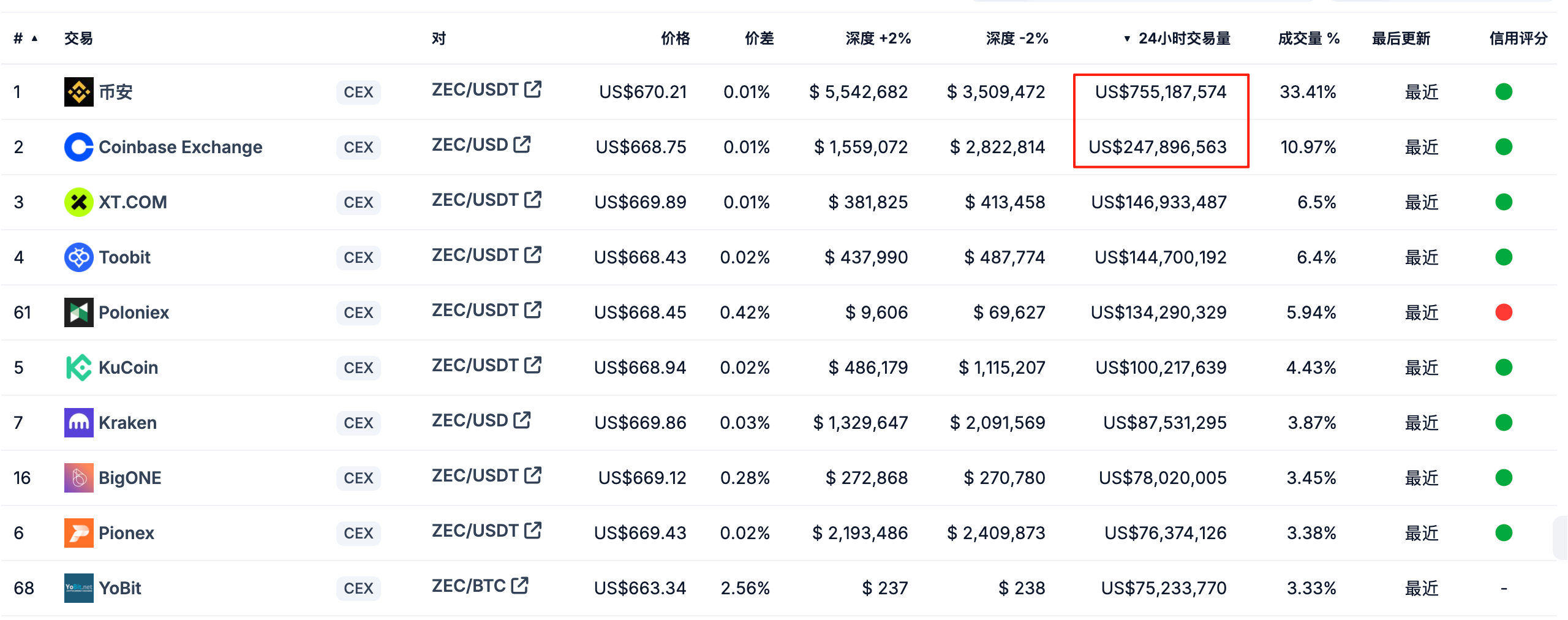
Secondly, there is genuine market demand based on its differentiated "Shielded Pool." Data shows that the total supply of Zcash (ZEC) Shielded Supply tokens once approached 5 million on November 3rd; as of this writing, that number remains above 4.82 million, representing approximately 30% of the total circulating supply; the number of on-chain transactions exceeded 26,000 within 24 hours; and the number of shielded transactions exceeded 2,200 within 24 hours. This demonstrates that ZEC's actual adoption data is extremely stable and active.
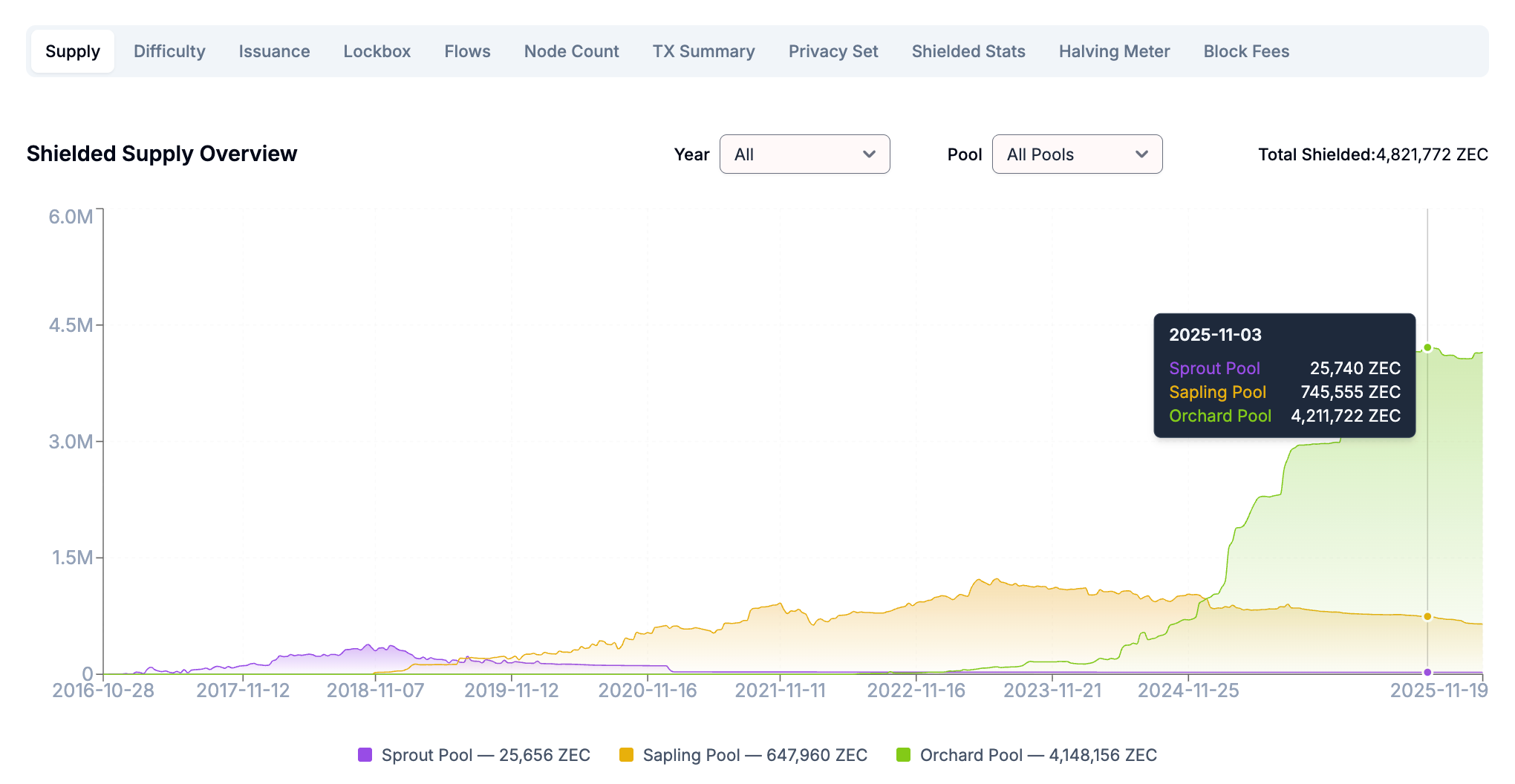
Thirdly, it boasts a relatively stable circulating supply and a smaller market capitalization compared to other mainstream tokens. According to Coingecko data , ZEC has a total circulating supply of nearly 16.4 million tokens and a total market capitalization of around $11 billion, ranking 16th in the cryptocurrency market capitalization rankings. Excluding stablecoins and wrapped tokens such as USDT, USDC, stETH, wstETH, and WBTC, its market capitalization ranks 11th, indicating significant upside potential compared to other mainstream coins with market capitalizations of tens or even hundreds of billions of dollars.
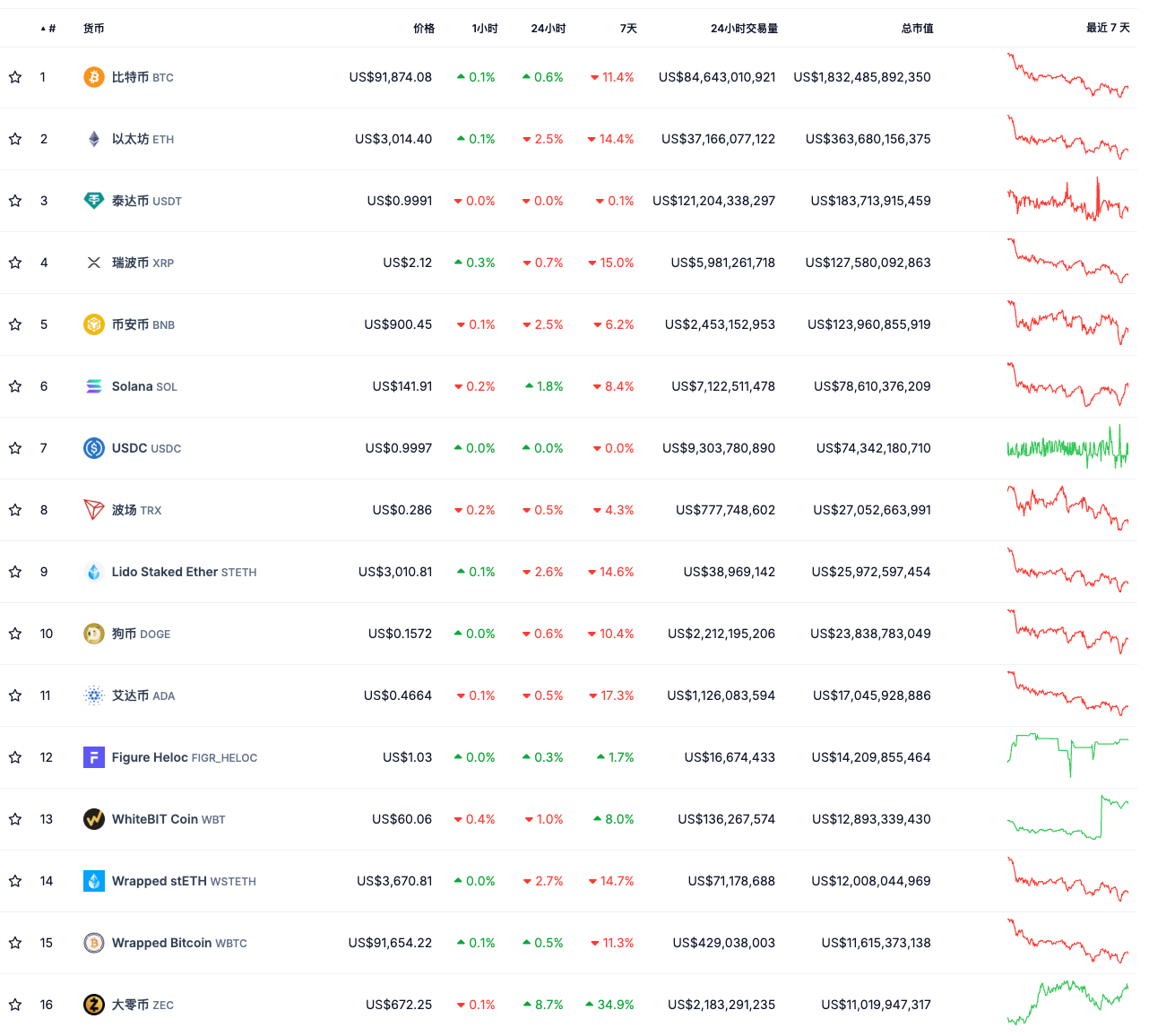
Fourth, its compliance is more robust, and it faces less regulatory pressure. Unlike controversial privacy tokens like XMR and DASH, which have been embroiled in lawsuits, ZEC, as a mainstream privacy POW token, has no direct conflict with regulatory agencies. Its POW mechanism also ensures stronger resistance to censorship to a certain extent. Combined with the Q4 2025 roadmap released by the ZEC development organization, Electric Coin Co. (ECC), ZEC possesses certain technological advantages. Furthermore, compared to XMR, ZEC's optional privacy models provide institutional adoption with room for compliance and reporting, making ZEC an asset acceptable to regulators.
Fifthly, ZEC boasts a long-established ecosystem and a community with a strong geeky and tech-savvy atmosphere. As the birthplace of ZK-Rollup technology, the ZEC community includes numerous tech gurus, crypto OGs, and well-known angel investors, including highly active crypto KOLs such as Cobie (who claims to have held ZEC since 2016) and Gemini co-founder Tyler Winklevoss (who wrote in 2021 that ZEC was "the most undervalued cryptocurrency").
Considering these five major advantages, ZEC has naturally become the preferred target for many BTC whales, fundamentalists, and proponents of censorship-resistant assets to migrate "sensitive assets." This is also supported by multiple data points.
Analyzing ZEC's Market Performance from a Transactional Perspective: From Real Adoption to Mainstream Market Focus
In our previous article, "Is Buying ZEC a Way to Sell Off BTC? 4 Major Industry Truths Behind the Surge in Privacy Coins," we analyzed in detail the possible reasons for the recovery of the privacy token sector. ZEC's performance during this month's rise has once again proven that its main driving force is the combined effect of market sentiment and real adoption, rather than manipulation by speculators.
ZEC becomes the most concentrated holding asset in futures contracts: its 24-hour trading volume is second only to BTC and ETH.
According to Coinglass data , ZEC saw over $72.88 million in liquidations across the network in the past 24 hours, with short positions accounting for over $69.3 million. This makes ZEC the third most liquidated cryptocurrency after ETH and BTC.
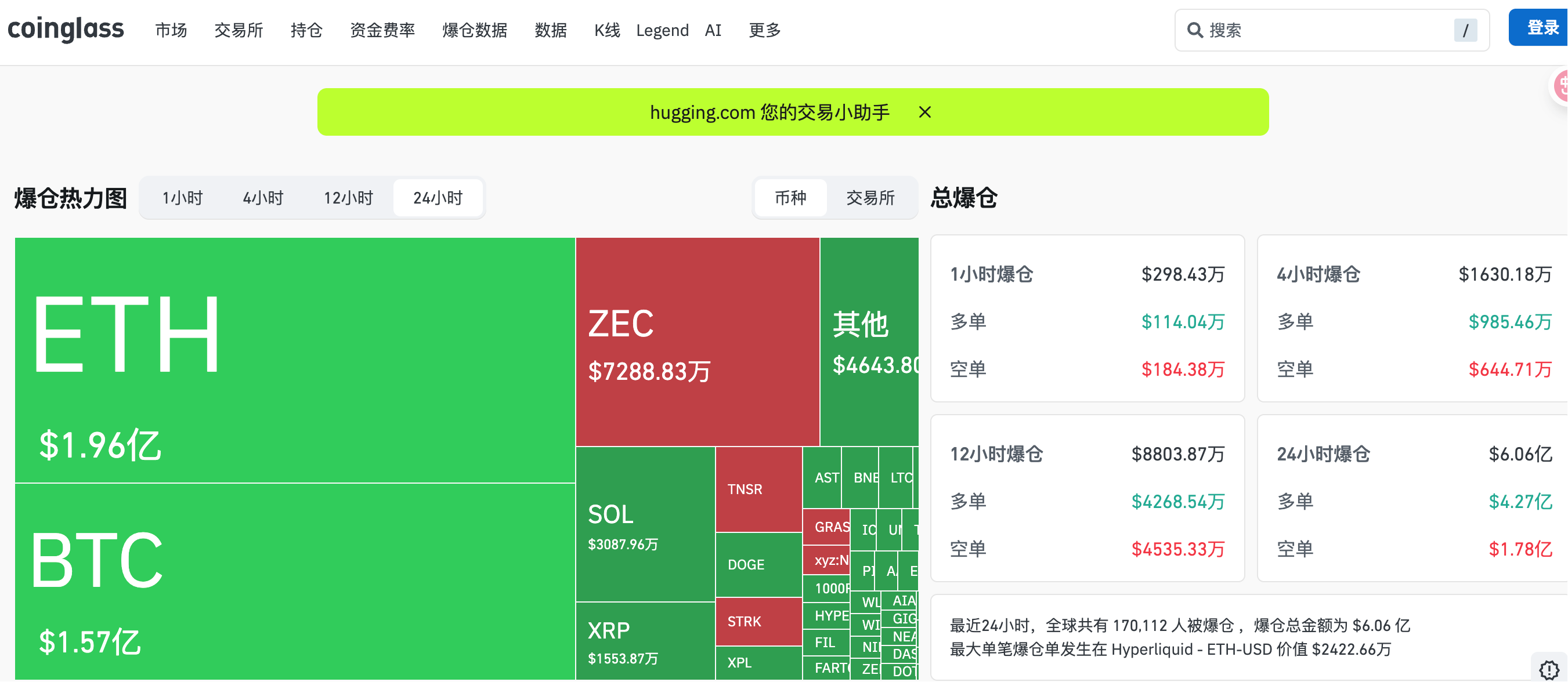
ZEC ranks third on the "contract margin call list".
In addition, the trading volume and open interest of ZEC contracts have remained high recently: as of the time of writing, the 24-hour trading volume exceeded US$6.6 billion; the 24-hour open interest exceeded US$1.2 billion.
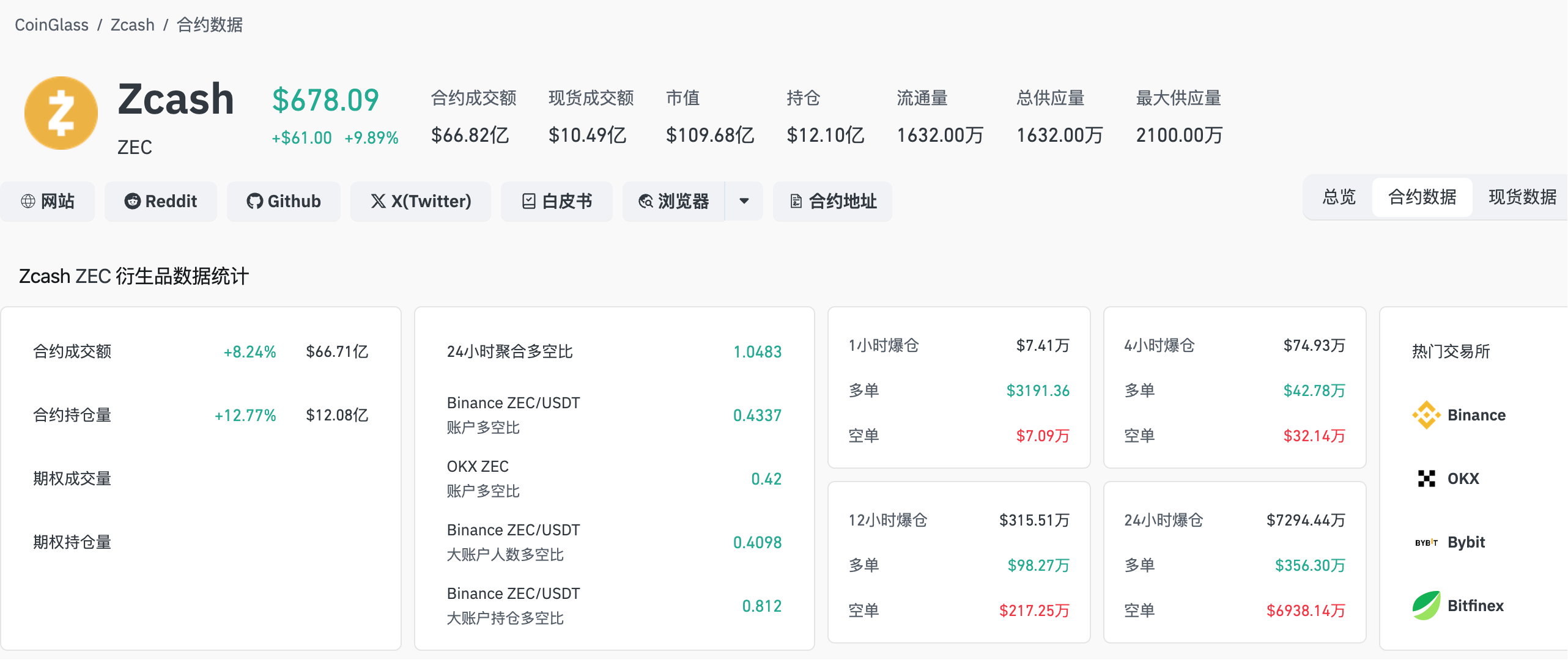
ZEC contract data is far ahead.
In the spot market, ZEC trading on major centralized exchanges has consistently maintained a net inflow: In the 50 days since October 1st, there were only 15 days with a single day of net outflow for ZEC spot trading; in the 30 days, ZEC spot trading saw a net inflow of approximately $316 million; and in the 50 days, the net inflow was approximately $419 million. Within 24 hours, ZEC spot trading volume on Binance exceeded $720 million, with a 24-hour increase of over 21%; and on Coinbase, spot trading volume exceeded $230 million, with a 24-hour increase of over 17%.

ZEC spot inflow and outflow data statistics chart
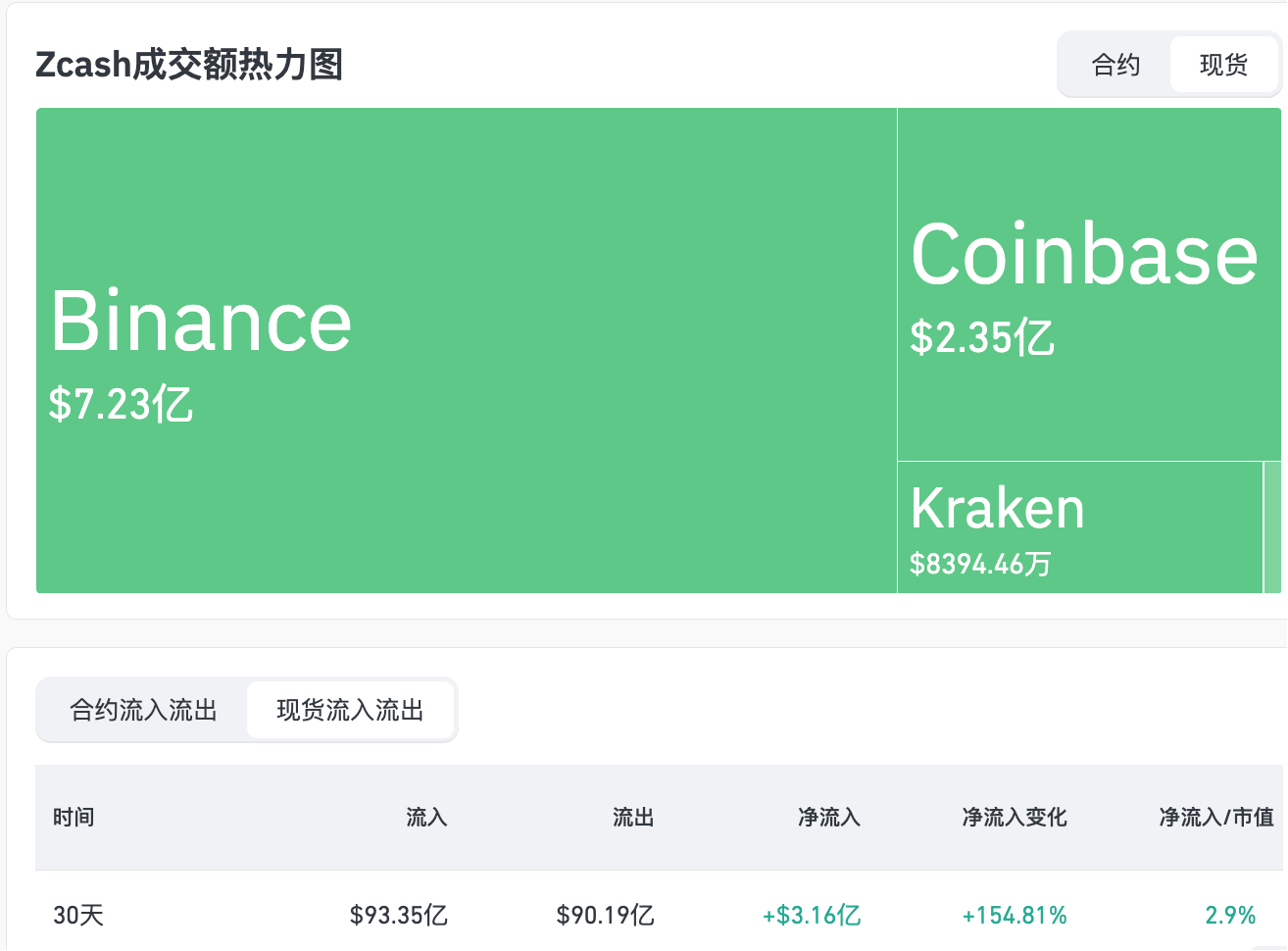
ZEC spot trading heatmap and 30-day trading data
Behind ZEC Price Fluctuations: From Increased Trading Volume Against BTC to Market Sentiment
Beyond overall trading volume, we can also observe two major phases ZEC has gone through by examining the trading volume of BTC trading pairs:
Firstly, prior to November 7th, the overall trading volume of BTC showed a gradual upward trend. After the price of ZEC broke through the year's high of 700 on that day, the trading volume of BTC trading pairs once exceeded 110. At this time, there were still many transactions of buying and selling ZEC with BTC in the overall buying of ZEC.
Secondly, after November 7th, ZEC became one of the few hot targets in the declining market. Coupled with the impact of previous events such as the "Chen Zhi case", the "Qian Zhimin case" and the net outflow of BTC ETF, market attention gradually shifted to a stage where everyone was chasing after it.

ZEC/BTC trading pair candlestick chart
Looking back at ZEC's slow rise in October, the upward curve of ZEC became much steeper in November. This was influenced by the overall market trend and also highlighted ZEC's objective advantages, such as real-world use cases and large capital capacity.
Especially after the first week of November, following a series of news events, BTC's privacy and censorship resistance were further questioned by the market; conversely, ZEC's "privacy coin attributes" were once again highly recognized by the crypto market.
In the second week of November, discussions about "BTC no longer being private" were rampant on the X platform. On November 14, Simon, a member of the Delphi Digital team, published a long article that definitively concluded that "ZEC has taken over from BTC as a store of value with privacy and self-determination."
Thus, after more than a month of development amidst a volatile and downward trend in the industry, ZEC has officially become the mainstream narrative in the industry. Many traders who had previously liquidated their ZEC positions at $300 and $400 are now buying back in large quantities, resulting in the first wave of "collective consensus buying." The market characteristics at this time are mainly as follows:
- ZEC's daily average increase has repeatedly remained between 20% and 30%, placing it among the top performers on the CEX gainers list.
- Several crypto OGs have explicitly stated that "BTC privacy is dead, ZEC is the true privacy token," including BitMEX co-founder Arthur Hayes. On November 7, he publicly stated that ZEC has become the second largest liquid holding in his family office fund Maelstrom Fund portfolio, second only to BTC. On November 16, he even launched an "emoji creation community event" to continue to highlight the activity of the ZEC ecosystem, saying that "the Christmas gift I want most is ZEC."
- XMR, DASH, and other privacy-related tokens also saw slight increases.
- A series of organic buy orders appeared in the order books of CEXs such as Binance, Coinbase, and OKX.
Even Google Trends saw a surge in searches for "Zcash" and "ZEC," with some experiencing a 200%–300% increase. More importantly, the market demand for ZEC, its popularity, and active trading attracted significant attention from the capital markets. Tyler Winklevoss, the co-founder of Gemini mentioned earlier, contributed substantial funds to the purchase.
ZEC Treasury Company established: Target to purchase at least 5% of tokens.
On November 12, Nasdaq-listed Leap Therapeutics announced the purchase of 203,775.27 ZEC tokens at an average price of $245 per token and announced its transformation into ZEC Treasury, now renamed Cypherpunk Technologies Inc. The company also announced a $58.88 million private funding round led by Winklevoss Capital.
On November 18, Cypherpunk Technologies Inc. (Nasdaq: CYPH) announced that it had spent another $18 million to purchase 29,869.29 ZEC (Zcash), at an average price of $602.63 per ZEC. Combined with its previous purchase of $50 million worth of ZEC, Cypherpunk's total ZEC holdings have reached 233,644.56, with an average cost of $291.04 per ZEC.
This acquisition brings the company's total ownership in the Zcash network to 1.43%. Cypherpunk, focused on privacy and self-sovereignty, sees Zcash as a "digital privacy asset" and a hedge against Bitcoin's transparency and financial infrastructure, especially in an AI-rich future. Previously, the company appointed Will McEvoy, head of Winklevoss Capital, as its Chief Investment Officer (CIO) and board member. Winklevoss Capital previously led a $58.88 million private placement in the company. The company aims to eventually hold at least 5% of the total ZEC supply, continuing its Zcash-centric digital asset vault strategy.
Whether ZEC can become another crypto asset, after BTC, to be heavily bought by Wall Street capital institutions and crypto investors remains to be seen, and as ZEC's value continues to be discovered, it may attract widespread attention.
Conclusion: Is ZEC "BTC privacy insurance"? Perhaps it's much more than that.
Of course, we are not encouraging investors to buy ZEC at high prices. What we are presenting is an objective analysis based on public data, market structure and demand. From a longer-term perspective, ZEC's long-term trend may still have room to continue.
In the article "Why Naval Says: ZCash is Insurance Against Bitcoin Privacy?" , Max Wong of IOSG Ventures provides a detailed explanation of the rise of ZEC and the underlying technical mechanisms. His core point is exactly what Naval, a well-known Silicon Valley investor, said when he first "endorsed" ZEC: "Bitcoin is insurance against fiat currency; ZCash (ZEC) is insurance against Bitcoin."
Today, in addition to being exchangeable with BTC and filling its privacy gaps, ZEC is gradually being seen by some market participants as a new narrative expectation of "taking over from Bitcoin as an anti-censorship asset".
As we approach the quarter-end of the 21st century, the value of freedom may no longer be defined solely by Bitcoin, driven by compliance and deeply involved with institutions, but rather by technological solutions that still focus on privacy and sovereignty. From this perspective, the return of ZEC acts as a "sovereignty signal" that reignites market discussions.
- 核心观点:ZEC因隐私优势成为BTC替代品。
- 关键要素:
- 美国政府没收超18万枚BTC。
- ZEC隐私池活跃,屏蔽交易超2200笔。
- ZEC获机构投资,市值排名第16。
- 市场影响:推动隐私币需求,重塑资产叙事。
- 时效性标注:中期影响



